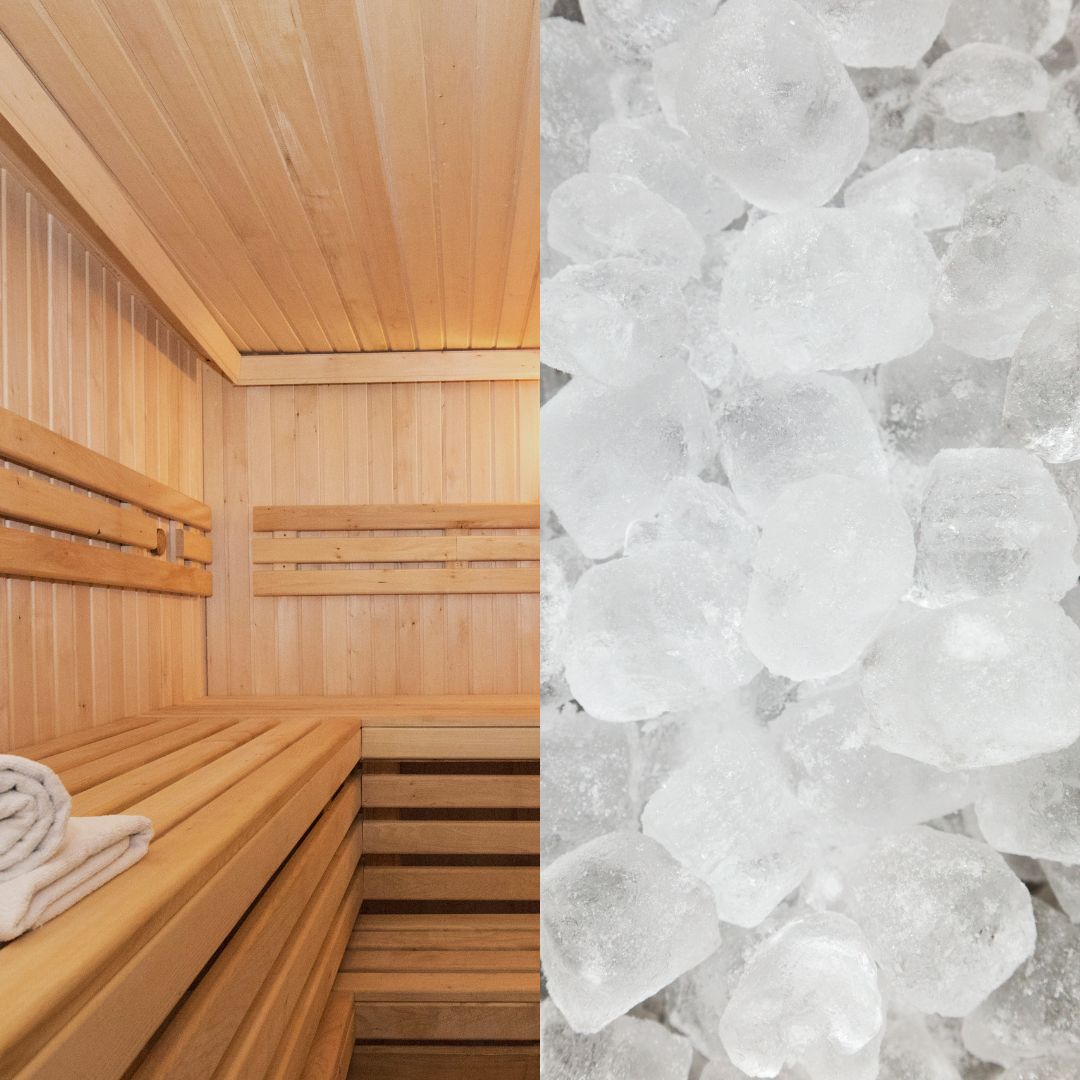Temperature-based therapies have gained popularity for their potential health benefits and invigorating effects on the body. Two contrasting approaches, saunas and cold plunging, have captured the attention of wellness enthusiasts seeking relaxation, recovery, and overall well-being. In this blog post, we'll delve into the world of temperature therapies, exploring the unique benefits and considerations of both hot saunas and cold plunging, helping you decide which one resonates with your wellness goals.
Hot Saunas:
Embrace the heat of hot saunas, a practice rooted in tradition. This self care routine involves exposing the body to high temperatures, often achieved through dry or wet heat. This therapy offers a range of benefits that span physical, mental, and even social well-being.
Benefits of Hot Saunas:
- Muscle Relaxation: Heat from saunas can help relax muscles, reduce tension, and alleviate soreness, making them a popular choice for post-workout recovery.
- Stress Reduction: The soothing warmth of saunas can promote relaxation, reduce stress hormones, and induce a sense of calm.
- Improved Circulation: Elevated temperatures in saunas lead to increased blood flow, potentially aiding cardiovascular health and overall circulation.
- Skin Detoxification: Sweating in a sauna can help open pores, releasing toxins and promoting healthier-looking skin.
- Social Interaction: Saunas often serve as communal spaces, encouraging social interaction and creating opportunities for relaxation and bonding.
Considerations for Hot Saunas:
- Hydration: Adequate water and electrolyte intake is essential to prevent dehydration while using saunas.
- Duration: Limit sauna sessions to avoid overheating and exhaustion. Start off slow an dlisten to your body.
- Pre-existing Conditions: Consult a healthcare professional if you have cardiovascular or medical conditions before using saunas.
Cold Plunging:
Cold plunging, also known as cold water immersion, involves immersing the body in cold water, typically below 59°F (15°C). This invigorating practice offers a contrasting array of benefits.
Benefits of Cold Plunging:
- Pain Relief and Inflammation: Cold water immersion may help reduce inflammation, providing relief from muscle soreness and joint pain.
- Enhanced Circulation: Cold plunging triggers vasoconstriction and then vasodilation, promoting improved blood flow and circulation.
- Mental Alertness: The shock of cold water can stimulate the release of adrenaline and noradrenaline, enhancing mental alertness and focus.
- Improved Immune Response: Cold exposure may activate the body's immune system, potentially enhancing its ability to fight infections.
- Stress Reduction: Cold plunging may activate the body's natural stress response, leading to improved stress tolerance over time.
Considerations for Cold Plunging:
- Gradual Adaptation: Start with shorter exposure times and gradually increase as your body becomes accustomed to the cold.
- Health Conditions: Consult a healthcare professional if you have heart conditions, respiratory issues, or other medical concerns.
- Post-Plunge Warmth: After cold plunging, ensure you warm up sufficiently to prevent hypothermia.
The choice between hot saunas and cold plunging ultimately depends on your preferences, health goals, and comfort level. While hot saunas offer relaxation, muscle relief, and social bonding, cold plunging presents the benefits of improved circulation, mental alertness, and potential pain relief. Whichever path you choose, both temperature therapies offer unique experiences that can contribute to your overall well-being. Remember to prioritize safety, listen to your body, and consult a healthcare professional if you have underlying health conditions before embarking on temperature-based therapies.
Note: The information provided in this blog post is for general informational purposes only and is not intended as a substitute for professional medical advice or treatment. Always seek the advice of your physician or other qualified health provider with any questions you may have regarding a medical condition.
Sources:
- Laukkanen, J. A. et al. (2019). "Cardiovascular and Other Health Benefits of Sauna Bathing: A Review of the Evidence." Mayo Clinic Proceedings.
- Scoon, G. S. et al. (2007). "Effect of Postexercise Sauna Bathing on the Endurance Performance of Competitive Male Runners." Journal of Science and Medicine in Sport.
- Bleakley, C. M. et al. (2014). "Cold-water immersion (cryotherapy) for preventing and treating muscle soreness after exercise." The Cochrane Database of Systematic Reviews.
- Mila-Kierzenkowska, C. et al. (2018). "Effects of Contrast Water Therapy on Recovery After Resistance Exercise in Women." Journal of Strength and Conditioning Research.


